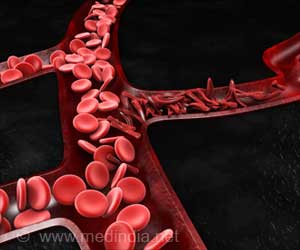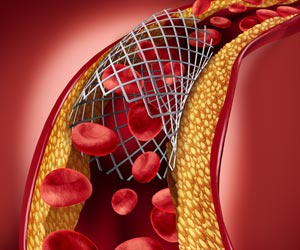New American research gives that a combination of two abnormal factors is behind the common inflammatory skin condition , rosacea.
New American research gives that a combination of two abnormal factors is behind the common inflammatory skin condition rosacea.
Rosacea is a chronic condition that causes facial redness. It affects about 14 million persons in America alone. As it is seen in those above 30 years, it is also known as adult acne. Rosacea is usually triggered by heat, alcohol, spicy foods and embarrassment. It is more likely to affect fair skinned people of European or Celtic descent.Rosacea is characterized by facial redness (erythema), bumps and pimples (papulopustules), and spider veins (telangiectasia). The condition is chronic and gets worse over time. It is cyclical and flares up for weeks and months and then subsides. There is no effective treatment although antibiotics are sometimes prescribed with mixed results.
During the study, the scientists found that people with rosacea have high levels of the anti microbial peptide cathelicidin in their skin and that the proteins this produces , are different to those found in people who do not have the disease. Another important contributor was the enzyme called stratum corneum tryptic enzyme (SCTE).
"It's like having lots of gasoline and a match", lead author Dr. Richard L. Gallo, professor of medicine and chief of the division of dermatology at the University of California, San Diego School of Medicine was quoted.
In the study report, the researchers conclude that overproduction of these two interactive inflammatory proteins lead to excessive levels of a third protein that causes rosacea symptoms.
Says Gallo: "Too much SCTE (stratum corneum tryptic enzymes) and too much cathelicidin leads to the abnormal peptides that cause the symptoms of this disease.”
Advertisement
The surprising thing about the discovery is that the precursor to the peptides they found is another peptide, cathelicidin, which is thought to protect the skin from infection. A range of other diseases with skin inflammation is linked to a shortage of cathelicidin. But in rosacea patients the scientists found the opposite: too much cathelicidin, although it was a different type to that found in people who do not have the disease.
Advertisement
So they tested the effect of the two substances by injecting laboratory mice with the cathelicidin peptides found in rosacea, adding SCTE, and increasing their protease activity by switching off a gene (Spink5, the protease inhibitor). Each of these increased inflammation of the skin.They also tested the role that cathelicidin plays in helping inflammation caused by SCTE by deleting the gene that codes for it in mice, the Camp gene.
In the study Gallo explains why antibiotics sometimes work in treating rosacea, even though the condition is not caused by bacteria: "Antibiotics tend to alleviate the symptoms of rosacea in patients because some of them work to inhibit these enzymes. Our findings may modify the therapeutic approach to treating rosacea, since bacteria aren't the right target."
Source-Medindia
ANN/J





